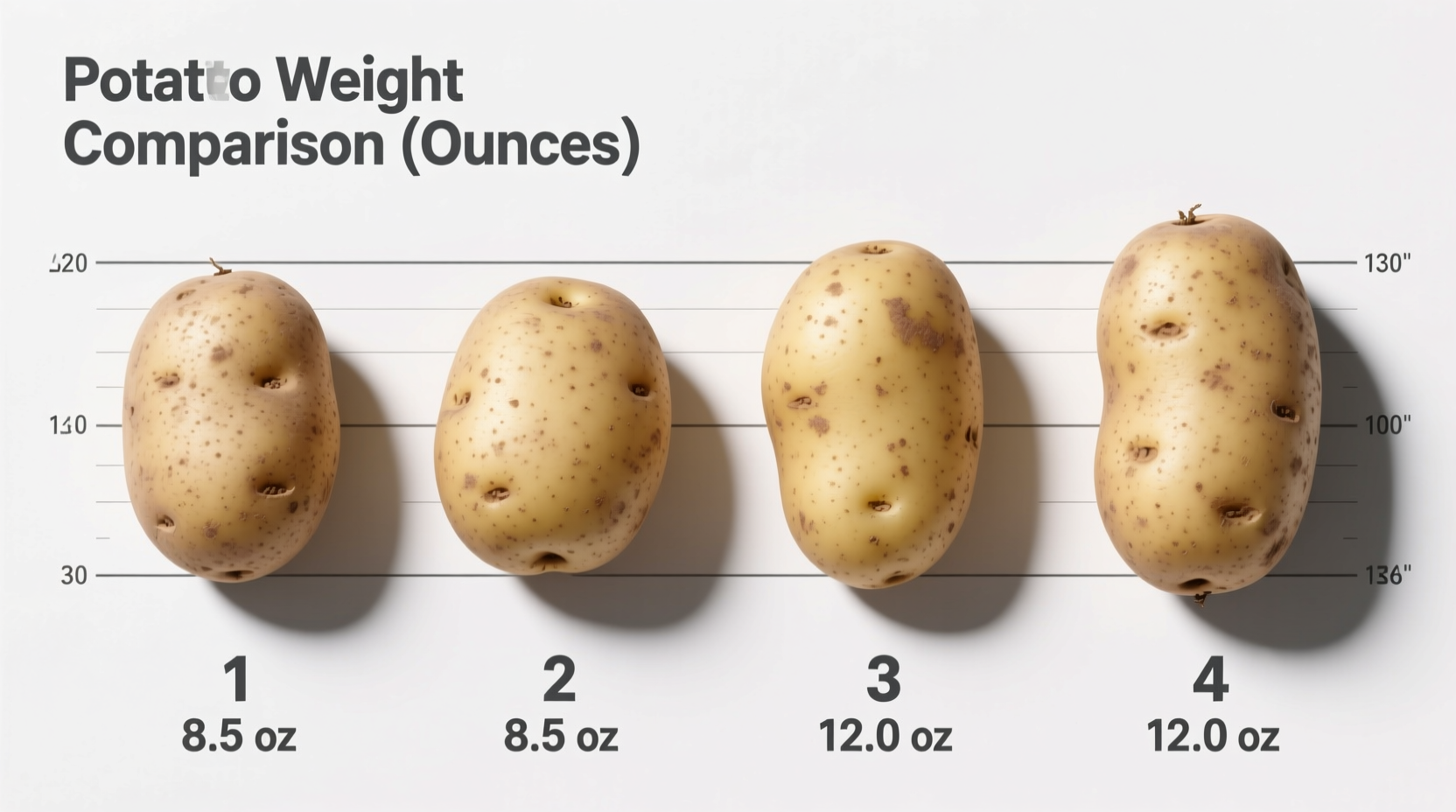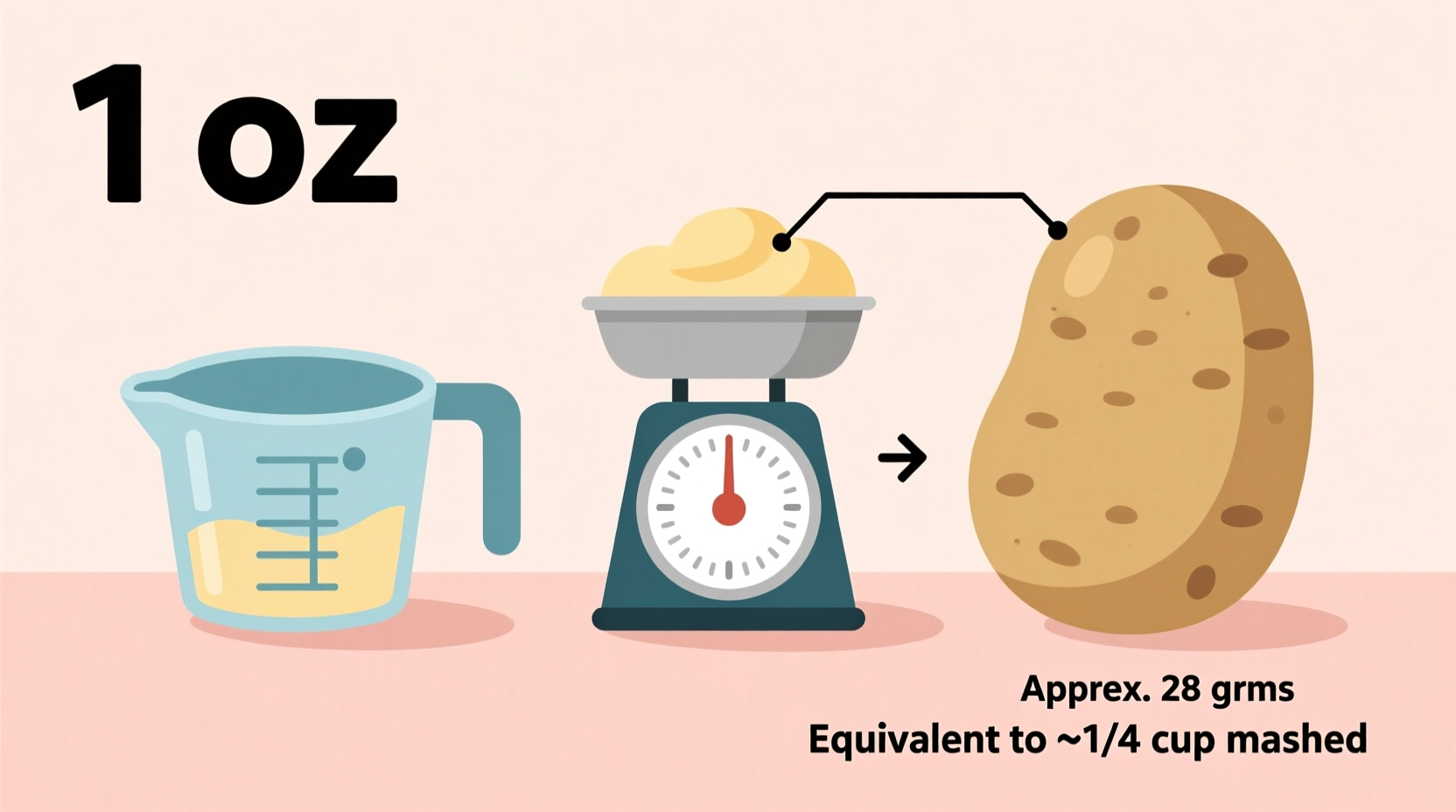Understanding potato measurements can be confusing, especially when recipes call for ounces while stores sell by pounds. This guide breaks down exactly what 1 ounce of potato means in practical terms—whether you're calculating costs, measuring for recipes, or tracking nutritional values.
Why Ounces Matter for Potatoes
While potatoes are almost never sold by the ounce in retail settings, understanding ounce measurements becomes crucial when:
- Following precise recipe instructions
- Calculating nutritional values for meal planning
- Scaling recipes up or down
- Working with small-batch cooking or specialty dishes
Actual Cost of 1 Ounce of Potatoes
The price of potatoes fluctuates based on season, variety, and location. According to the USDA Economic Research Service, average U.S. retail potato prices range from $0.50 to $1.30 per pound.
| Potato Type | Price Per Pound | Price Per Ounce | Where Typically Found |
|---|---|---|---|
| Russet potatoes | $0.50-$0.90 | $0.03-$0.06 | Grocery stores, bulk bins |
| Red potatoes | $0.70-$1.10 | $0.04-$0.07 | Grocery stores, farmers markets |
| Sweet potatoes | $0.90-$1.30 | $0.06-$0.08 | Grocery stores, specialty markets |
| Baby potatoes | $2.50-$4.00 | $0.16-$0.25 | Premium grocery sections |
This potato price comparison table shows why baby potatoes cost significantly more per ounce—they require more labor to harvest and package. Most standard potatoes follow the $0.03-$0.08 per ounce range when calculated from their per-pound pricing.
Physical Measurement: What Does 1 Ounce of Potato Look Like?
When recipes specify "1 ounce of potato," they're referring to weight, not volume. Here's what 1 ounce (28 grams) of different potato forms looks like:
- Raw, peeled potato: Approximately 1/4 cup chopped or 2-3 small baby potatoes
- Cooked potato: Slightly less volume due to water loss during cooking
- Potato flakes (for mashed): About 3 tablespoons

When Ounce Measurements Actually Matter
Understanding ounce measurements becomes essential in specific culinary contexts:
- Professional recipe development: Chefs require precise measurements for consistent results
- Nutrition tracking: Dietitians calculate exact nutritional values per ounce
- Food science applications: Researchers need precise measurements for experiments
- Special dietary needs: People with diabetes or other conditions monitor exact carbohydrate intake
For home cooking, volume measurements (cups) are usually sufficient unless you're following a highly technical recipe or managing specific dietary requirements.
Nutritional Value of 1 Ounce of Potato
According to USDA FoodData Central, 1 ounce (28g) of raw Russet potato contains:
- Calories: 20
- Carbohydrates: 4.5g
- Fiber: 0.4g
- Protein: 0.7g
- Vitamin C: 5% of daily value
- Potassium: 4% of daily value
Cooking method significantly affects nutritional values—boiled potatoes retain more nutrients than fried, while baking concentrates certain nutrients due to water loss.
Practical Tips for Measuring Potatoes
Here's how to accurately measure potatoes without a scale:
- For approximate ounce measurements: Use a standard measuring cup (1 cup chopped potatoes = 5.3 ounces)
- For small quantities: Remember that one average golf-ball sized potato is about 2 ounces
- When precision matters: Invest in a kitchen scale that measures in both ounces and grams
- For recipe conversion: 16 ounces = 1 pound = approximately 3 medium potatoes
Professional chefs recommend always weighing potatoes when following baking recipes or creating dishes where precise moisture content matters, as potato density can vary significantly between varieties and growing conditions.
Seasonal Price Variations to Consider
Potato prices follow a predictable seasonal pattern that affects the cost per ounce:
- Spring (March-May): Highest prices as winter storage stocks deplete
- Summer (June-August): Moderate prices as new crop begins arriving
- Fall (September-November): Lowest prices during peak harvest season
- Winter (December-February): Gradually increasing prices as storage costs rise
According to agricultural economists at University of Minnesota Extension, fall prices can be 30-40% lower than spring prices for the same potato varieties, making the cost per ounce significantly less during harvest season.
Conclusion: Practical Potato Measurement Guide
While "how much is 1 ounce of potato" seems like a simple question, the answer depends on whether you're asking about price, physical measurement, or nutritional content. For most home cooks, understanding that 1 ounce equals approximately 1/4 cup chopped potato and costs between $0.03-$0.08 provides sufficient practical knowledge. When precision matters for recipes or dietary needs, using a kitchen scale ensures accurate measurements every time.











 浙公网安备
33010002000092号
浙公网安备
33010002000092号 浙B2-20120091-4
浙B2-20120091-4